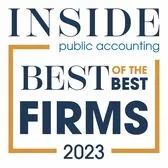- Overview -- The federal Opportunity Zone (QOZ) program was introduced effective January 1, 2018, as part of the 2017 Tax Cuts and Jobs Act (2017 Act). The QOZ program is a highly flexible tax deferral and permanent savings program available to individuals and business entities that are holding appreciated assets. It offers taxpayers a unique opportunity to divest out of concentrated appreciated asset positions and allow taxpayers to tax efficiently move the associated Deferred Tax Gain into one or more asset classes.
- Which Gains are Eligible -- The Deferred Tax Gain can be related to a wide variety of capital assets sold by the investor, ranging from: the sale or disposition of land, developed real estate, stock or bond portfolios, artwork, collectibles, Bitcoin or other cryptocurrencies, as well as other tangible and intangible assets. The Deferred Tax Gain must be reinvested into a Qualified Opportunity Zone Fund (QOF) within 180 days of recognizing the tax gain on sale (note there are beneficial timing rules for gains reportable from a partnership). Timely reinvestment will generally allow deferred gain reporting until the earlier of December 31, 2026, or the date the QOF is sold.
- Qualified Opportunity Fund Requirement -- Taxpayers wishing to participate in the QOZ program must do so through a QOF. The statute provides a fairly straightforward process to meet the QOF requirements. The entity must be either: i) a C Corporation, ii) an S Corporation or iii) a Partnership (including an LLC electing to be taxed as a partnership). A QOF can represent a single investor or multiple investors.
- Tax Basis Adjustments/ Gain Reporting and Exemption -- The federal tax impact of participating in a QOF includes deferring qualified gains for up to eight years and also permanently exempting from 10%, 15% of the original federal gain and 100% of the post-reinvestment gain – after holding the investment for five, seven and ten years, respectively.
For example, a taxpayer investing $1,000,000 of Deferred Tax Gain into a QOF on June 30, 2018, will start with a $0 tax basis in the QOF since the gain has not been recognized. On July 1, 2023 after meeting the 5-year holding requirement the taxpayer will receive a 10% step-up to $100,000, leaving $900,000 of deferred tax gain, on July 1, 2025 the 7-year step-up of an additional 5% will bring the cumulative tax basis to $150,000 and lower the deferred gain to $850,000. At December 31, 2026, the deferred gain of $850,000 will be includable in the taxpayer’s 2026 tax return, and their QOF tax basis will then be $1,000,000 ($150,000 basis step-up plus the $850,000 deferred gain recognized).
Once the investor has held the QOF for at least ten years, the tax basis in the QOF will fluctuate with the changing fair market value, and the taxpayer can elect to exempt the post-investment federal tax gain upon disposition for as long as 2046 – allowing decades of potential tax-free appreciation.
- Legal Form of Qualified Opportunity Zone Fund -- Choosing the right legal form for the QOF and any second-tier entities holding the QOZ Property will be critically important in ensuring the optimal tax results from both annual operations and exit standpoint. This will require a careful analysis of the specific investors in the QOF, the types of property to be held by the QOF and the likely exit options. We believe S Corps will be problematic investment vehicles for most QOF investments, and LLC/ Partnerships will generally be the preferred choice for leveraged real estate projects.
- Percentage of Qualified Property Test/ Penalty -- The QOF must generally hold at least 90% of their assets in Qualified Opportunity Zone Property – which includes: i) an interest in undeveloped QOZ real estate, ii) an interest in developed QOZ real estate, which meets the substantial improvement test (reinvesting 100%+ of cost basis of the building within 30 months of acquisition), iii) Qualified QOZ Property. Mobile property that may go outside the QOZ boundaries, will likely not qualify as QOZ Property, but future regulations may provide some relief. Other business entities held by a QOF must hold at least 70% Qualified Opportunity Zone assets. To the extent the percentages are too low; a variable penalty of approximately 5.5% is accessed at each 6-month testing date.
- Ineligible Business Types -- QOF investments into business entities that hold real estate or other QOZ Property can also qualify as QOZ Property; however, there are certain business entities, which hold restricted assets, including liquor retailers, golf courses, massage or tanning salons that are explicitly excluded from QOZ Property eligibility. Interestingly, a QOF can apparently invest directly into such property, but cannot invest into an entity holding one of these assets.
- State Tax Complexities -- Even though all states have qualified Opportunity Zone census tracts (approximately 8,700) eligible for investment, these only impact the federal tax benefits. States can elect to have the QOZ provisions apply for state purposes – or not. To date, only 28 states, including Utah and the District of Columbia have opted in, although more states will likely conform in the near future. California has opted out of the program.
The combination of varying state tax rates, credit provisions, and varying conformity measures with respect to the QOZ results in a far more complicated state tax investment landscape, and as such, taxpayers contemplating a QOF investment will be well served to fully consider all possible scenarios fully in order to understand the exit scenarios and their impact on their investment goals and strategies.
- Real Estate “Original Use”/ Rehab Requirements -- Taxpayers must generally be the “Original” user of the QOZ Property. In the case of improved real estate, the code and proposed regulations provide guidance that the taxpayer must invest at least 100% of the investor’s original cost basis in rehabbing the property. The proposed regulations allow bifurcation of the land and building investments thereby lowering the rehab cost threshold. For example, if a taxpayer invests $2,000,000 into a QOF and the QOF then invests in real estate with an old commercial building on it. The land is worth $800,000, and the building is worth $1,200,000. Rather than being required to invest an additional $2,000,000 into the project to meet the “original” user requirement, only $1,200,000 of additional investment into the building is required.
- Who should and should not invest in a QOF -- If a taxpayer is setting up their own QOF, the deferred gain should be at least $100,000 in order to justify the legal and administrative costs of the formation. Investment firms will be setting up diversified QOF’s to take on smaller amounts, but taxpayers and their advisors will need to perform thorough due diligence in order to understand the legal and tax structure and the proposed reinvestment strategy of the fund. State tax impact discussed in 8) above will be critically important when investing into a general QOF.
The investor must have at least a ten-year investment horizon to justify the QOZ strategy. There may be limited situations where a taxpayer utilized a QOF strictly for deferring the tax payment on a gain, but there are added costs and investment risks in the intervening years.
Investors in high tax states such as California who have not adopted the QOZ program should consider a Section 1031 transaction rather than a QOF if the assets involved are 100% real estate in order to defer the California tax also. This is even more important if the investor is older or in poor health since the real estate will generally be fully “stepped up” to fair market value upon death in a 1031 transaction, which is not the case with a QOF. Another difference between 1031 and QOF investing is that only the capital gain portion (all or just a percentage) of the transaction needs to be reinvested, whereas 1031 requires all proceeds (and possibly debt amounts) to be reinvested or matched.
Open Issues
There will be many open issues surrounding the program and additional guidance is expected in the near future. Still, taxpayers who have already sold an asset at a large capital gain should consider forming a QOF in order to “park” the gain within 180 days for future reinvestment once more guidance is provided.
For additional information about the OZ program, please contact Blake Christian, CPA/ MBT, BlakeC@hcvt.com or Alejandra Lopez, Alejandra.lopez@hcvt.com. More information is also available on our website at www.hcvt.com


